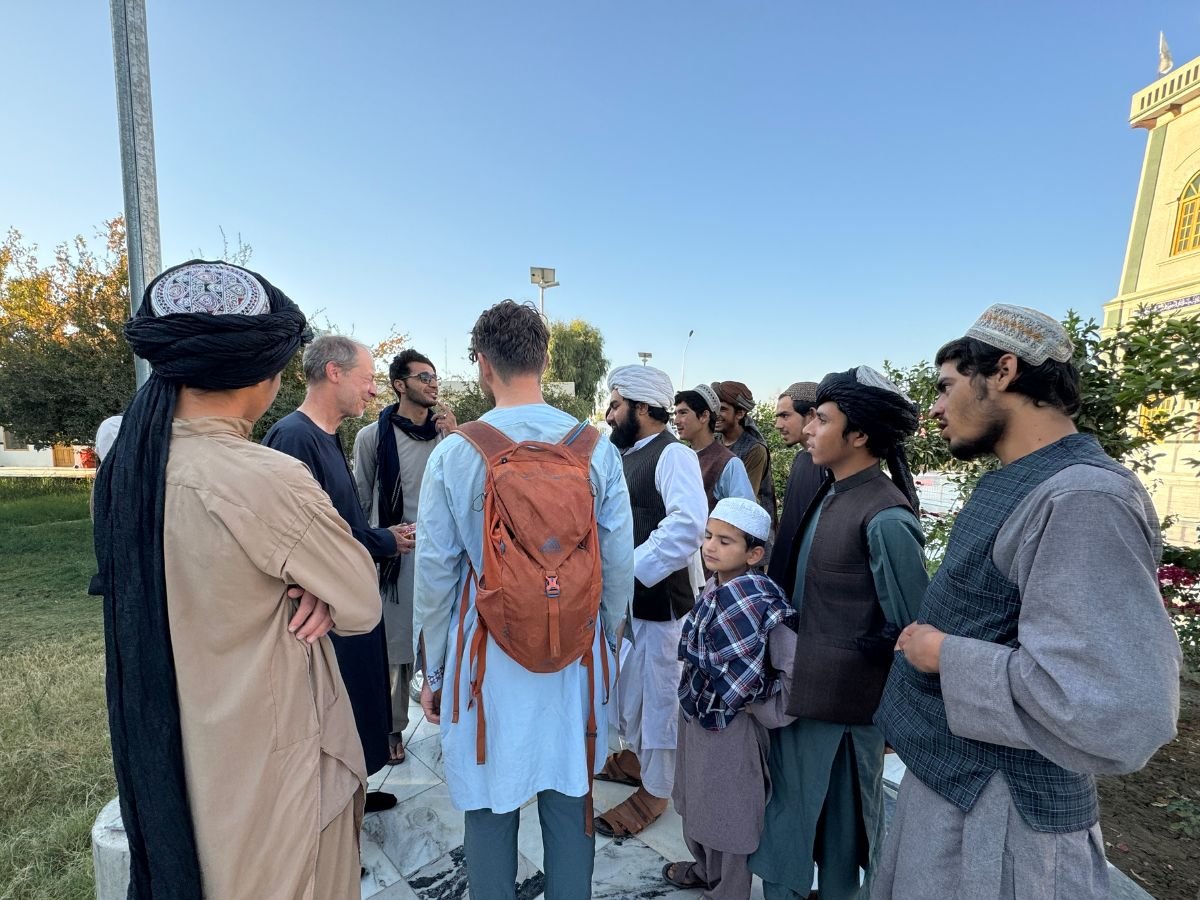If you’re dreaming of an off-the-beaten-path adventure, this Afghanistan travel guide will walk you through everything you need to know about exploring the country independently, without a tour group.
A great deal of time has gone into compiling this guide in the hope that you will feel more confident and equipped to explore the country yourself. So, let’s first address your safety concerns.
Is now the right time to visit Afghanistan?
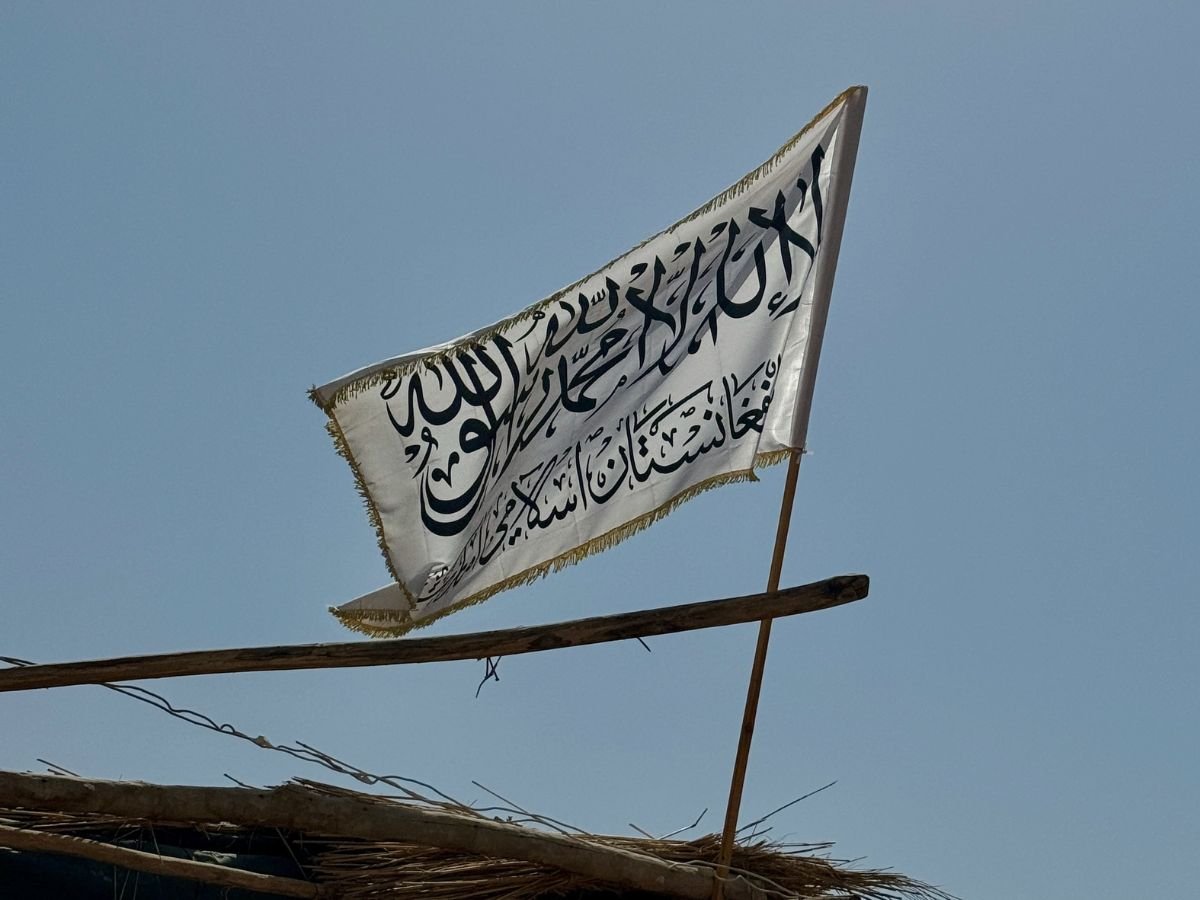
This Afghanistan travel guide is based on first-hand experience. When I first announced to friends and family that I was planning on visiting Afghanistan during a 4-month overland trip from Turkey to Pakistan, they thought I was nuts. They said, “Why now? It’s not safe. Aren’t you scared of the Taliban…?”
When I crossed the Tajik-Afghan border, dressed in a long black dress and a hijab, I was unbelievably nervous and thought, “What the hell am I doing?!” But after spending even a few hours in the country, I realised I had made the right decision by giving Afghanistan a chance.
In my honest opinion, if you’re interested in visiting Afghanistan, the best time to visit is now. Yes, the Taliban are s***, but after 20 years of war, the country is the “safest” it has been in a long time.
Is Afghanistan safe to travel to in 2025?
Naturally, safety is your primary concern if you’re considering travelling to Afghanistan in 2025.
I get it—it’s easy to be convinced that Afghanistan is the most dangerous state in the world just by scrolling through social media or watching the news. I mean, just before I entered Afghanistan, friends sent me several news articles reporting on human rights violations against women and a new law forbidding them from raising their voices in public(see article here), as well as an article reporting three Spanish tourists shot in Bamyan only a few months earlier.
On top of that, the UK travel advisory warns all citizens not to travel to Afghanistan, stating, “There is a heightened risk of British nationals being detained”.
Yet, still, I went. But why? One of the reasons was that I had set myself a challenge to travel from Turkey to Pakistan without using any form of air travel. My route to Afghanistan was Armenia, Georgia, Russia, Kazakhstan, Kyrgyzstan, Uzbekistan, and Tajikistan. Afghanistan was my final hurdle.
Secondly, while I don’t condone the actions of the Taliban—their oppression of women, their treatment of minorities, and their violent enforcement of a distorted interpretation of the law and Islam—I wanted to show people that Afghanistan does not equal the Taliban. I knew that by experiencing the country firsthand, I would gain a deeper understanding and appreciation for the country beyond how it is portrayed in the media.
I’ve written a more detailed guide concerning safety in Afghanistan; read it here.
How to prepare for your Afghanistan trip?
As with any trip, there are many things to consider beforehand, including visas, SIM cards, ATMs, currency, and what to pack. Afghanistan is no different.
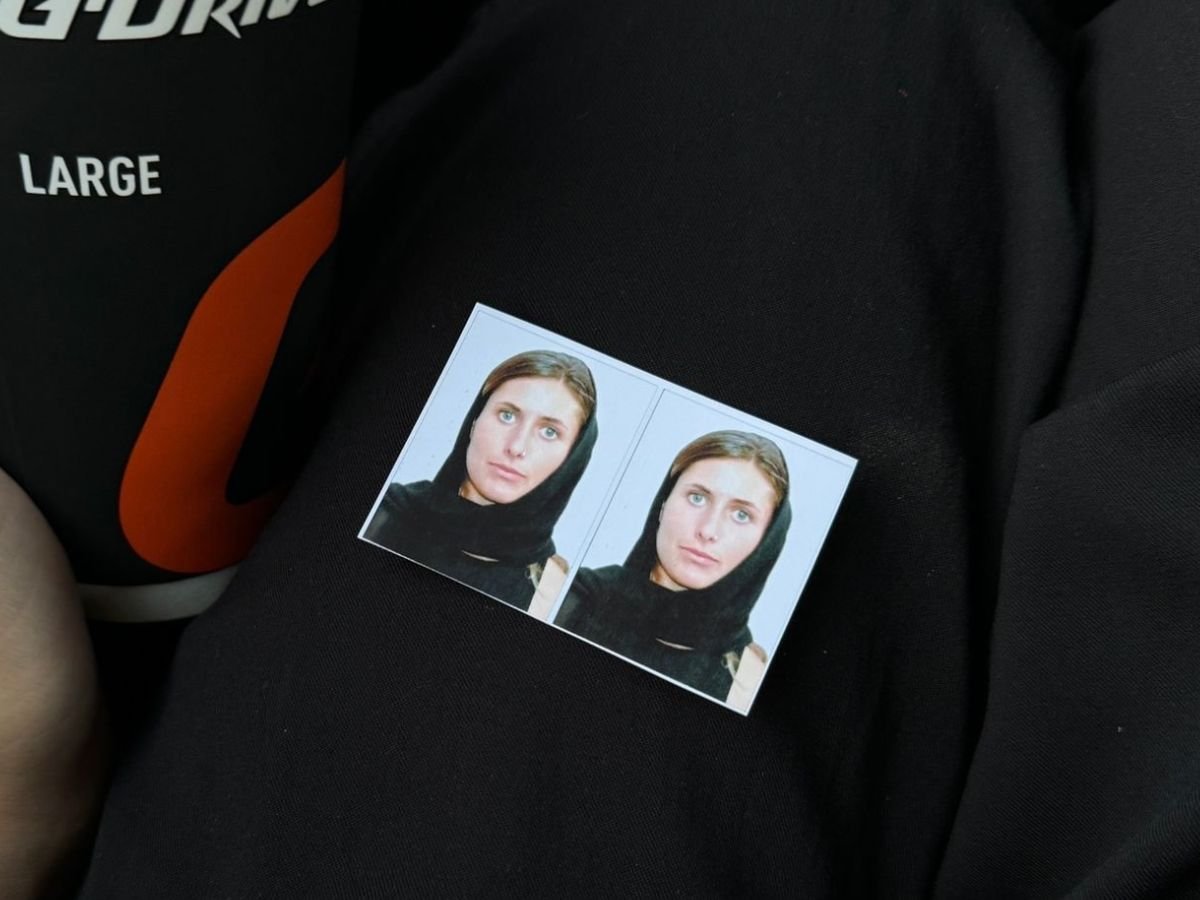
Afghanistan Visa
Today, anyone and their dog can go to Afghanistan. No, seriously. The Taliban have opened up visas to all nationalities.
When the Taliban came to power, only two or three embassies could issue a visa, but as of today, the following embassies have been reported to issue visas:
- Dubai (UAE)
- Islamabad (Pakistan)
- Peshawar (Pakistan)
- Abu Dhabi (UAE)
- Doha (Qatar)
- Istanbul (Turkey)
- Tehran (Iran)
- Bishkek (Kyrgyzstan)
- Madrid (Spain)
- Berlin (Germany)
- London (UK)
How you plan to enter Afghanistan will depend on which visa is easiest for you. If you’re coming from Tajikistan, you’ll enter via the Sher Khan Bandar border. This is the only border in Afghanistan that issues visas on arrival.
When I started planning this trip, I struggled to find an Afghanistan travel guide that explained the current visa-on-arrival process clearly, so now I’ve written a guide around my personal experience crossing the Sher Khan Bandar border here.
Most travellers I met in Afghanistan who had flown into Kabul had obtained tourist visas in Dubai or Islamabad, and those who entered via the Torkham border from Pakistan had received their visas in Islamabad or Peshawar.
No matter where you obtain your visa, all tourist visas are single-entry and valid for 30 days.
But beware—the situation is constantly changing. To stay up-to-date with border crossings and visas, join a Travellers Afghanistan WhatsApp group. If you message me on Instagram or WhatsApp, I’ll happily add you to the group.
Afghanistan SIM card
Many travellers buy e-SIMs in advance from Airalo, but for Afghanistan, buying a SIM in person is a lot cheaper. Plus, it’s an experience! The best option for foreigners is to visit an Afghan Wireless shop in the first city they reach, whether Kabul, Kunduz, or Herat.
I paid 700 AFN ($10) for a 10GB SIM for 1 month. This is cheap compared to the 5GB eSIM Airalo offers for $25.
In the Afghan Wireless SIM shop, there is a separate section for women. The Taliban have stripped Afghan women of their economic independence by prohibiting them from working in many sectors. The one lady serving me in the Afghan wireless phone shop was the only female I saw working in the 11 days I was in Afghanistan.
Just a heads up, while it was extremely useful to have a SIM in Afghanistan, outside the major towns and cities, we had no signal. This brings me on to my next point!
Useful apps in Afghanistan
Network coverage in Afghanistan is kind of patchy, and outside the main cities and towns, you’ll likely be without any network. This is why I suggest downloading:
Google Maps (offline): Save the map of Afghanistan to your offline maps, but be aware that many streets do not appear on maps in general, especially if you’re travelling through the central road from Kabul to Herat, like we did.
Google Translate (offline): Afghanistan is incredibly diverse and populated by many ethnolinguistic groups. The two main languages are Dari (a dialect of Persian, also known as Farsi) and Pashto. Download them both, including their keyboards. English is not widely spoken in Afghanistan, so Google Translate was an absolute lifesaver!
iOverlander: If you’re not familiar with iOverlander, it’s an app used by overlanders, i.e., travellers who overland with vans, bicycles, etc., and pinpoint things on the app that may be useful for other travellers. In Afghanistan, the informal budget accommodation options are called chaikhanas, and the best way to find where they are located is via this app.
XE Currency Converter: This is the app I use for all my trips. It gives you up-to-date exchange rates.
Can you pay with bank card in Afghanistan?
This is perhaps the most important thing to note in this Afghanistan travel guide. Cash is king in Afghanistan, and international cards are not accepted. My advice is to bring as much USD as you think you’ll need with you to exchange. There are exchange spots everywhere.
I first exchanged some USD to AFN in Kunduz and then later at Sarai Shahzada, Kabul’s famous currency exchange market.
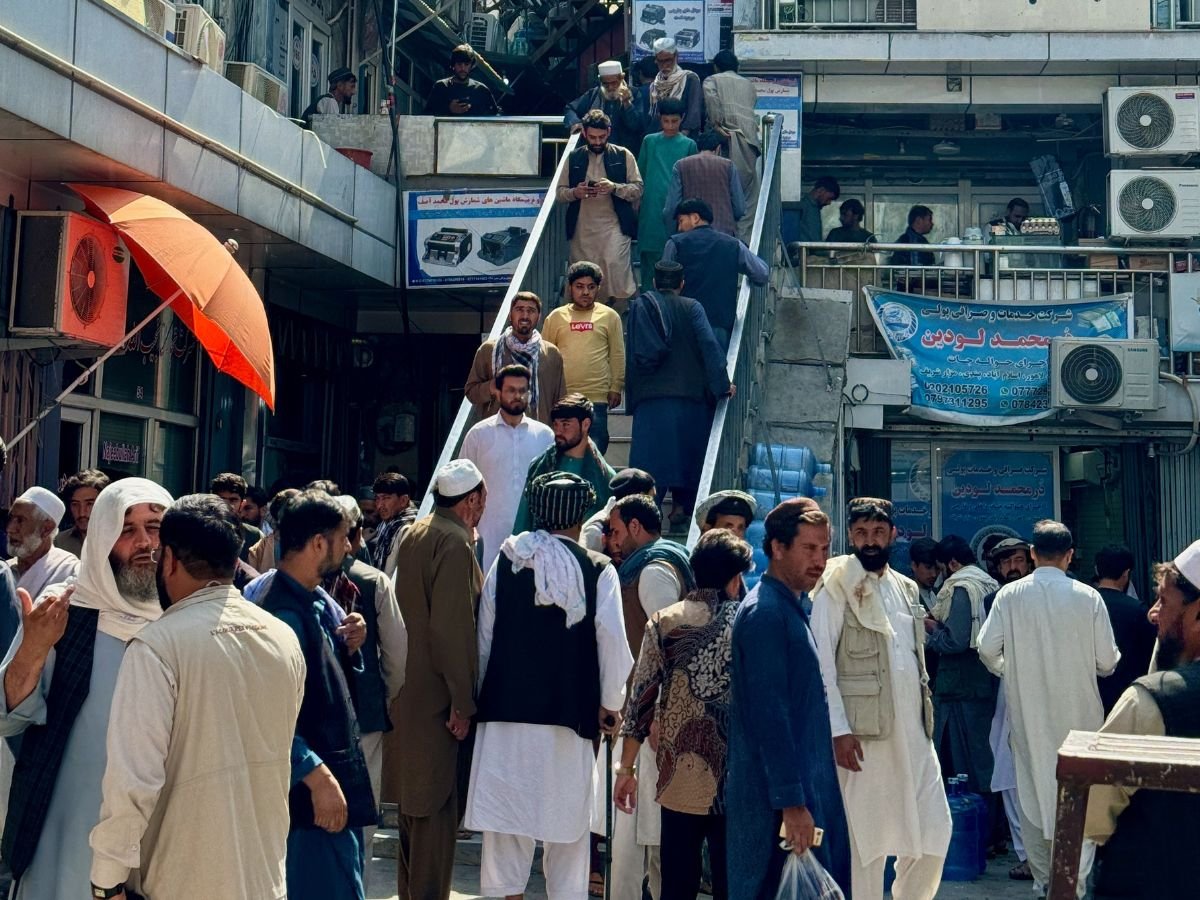
Want a better idea of how much you may need to bring for a trip to Afghanistan?
Check out: How Much Things Cost in Afghanistan?
What to pack for Afghanistan?
This all depends on what time of year you want to travel to Afghanistan. I travelled there in September, meaning that the weather was pretty good and I was warm enough in just a long dress.
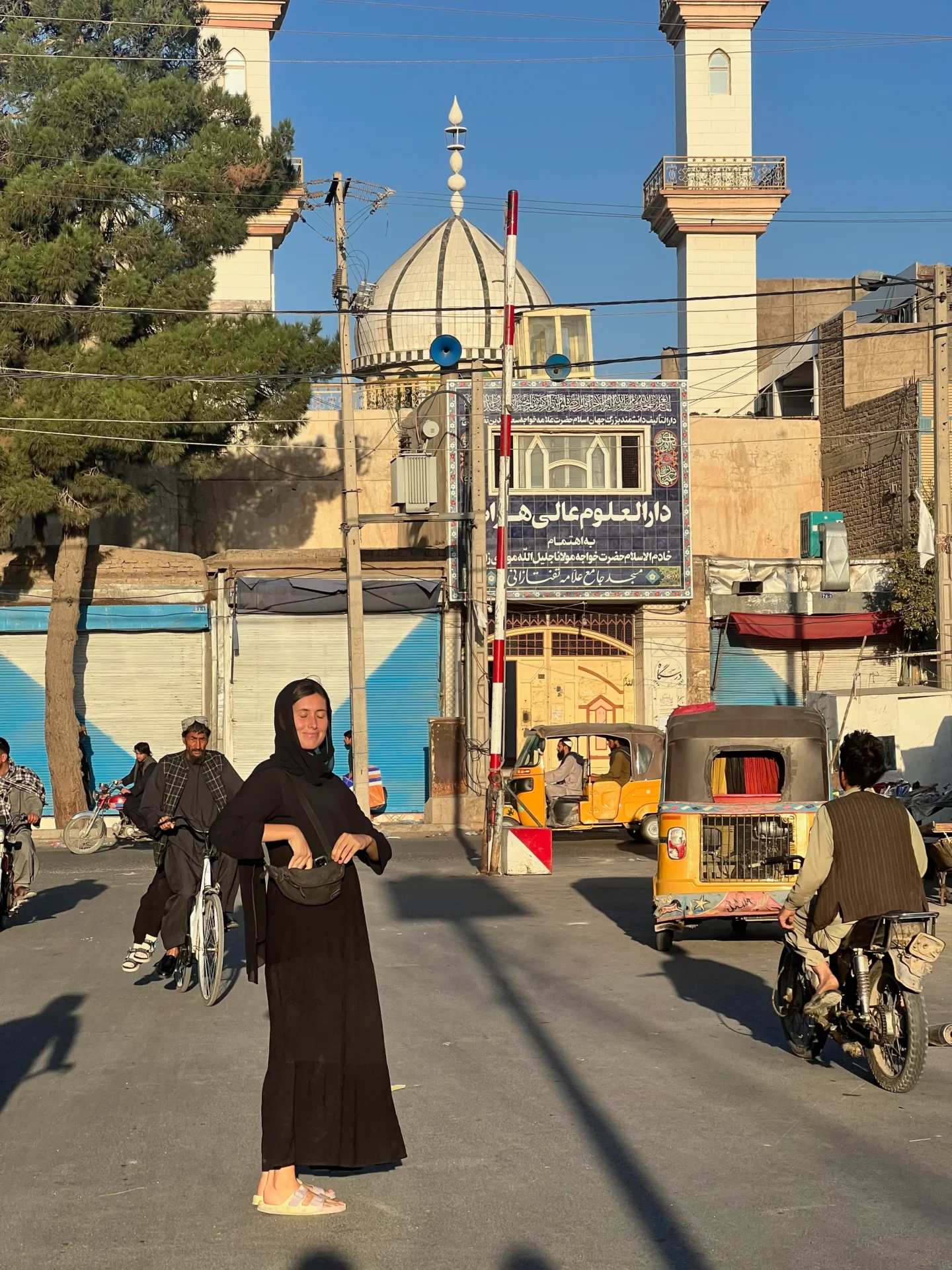
For men, clothes are not so important to buy in advance. Once you arrive, you can buy a traditional Afghan outfit called a perahan tunban. My friend paid 400 AFN ( €5) for his in a market in Kabul.
But ladies, you must wear a hijab or headscarf and cover everything except your face, hands, and feet. Bring at least one suitable outfit, and you can easily buy more dresses when you arrive.
Travel permits for Afghanistan
Afghanistan has 34 provinces, and to travel within the country, the Taliban require permits for each province you enter. Many travel agencies offer to organise travel permits for travellers in Afghanistan in advance (for a small fee). But don’t worry; you can easily obtain these from the Ministry of Information and Culture (وزارت )once you arrive for free.
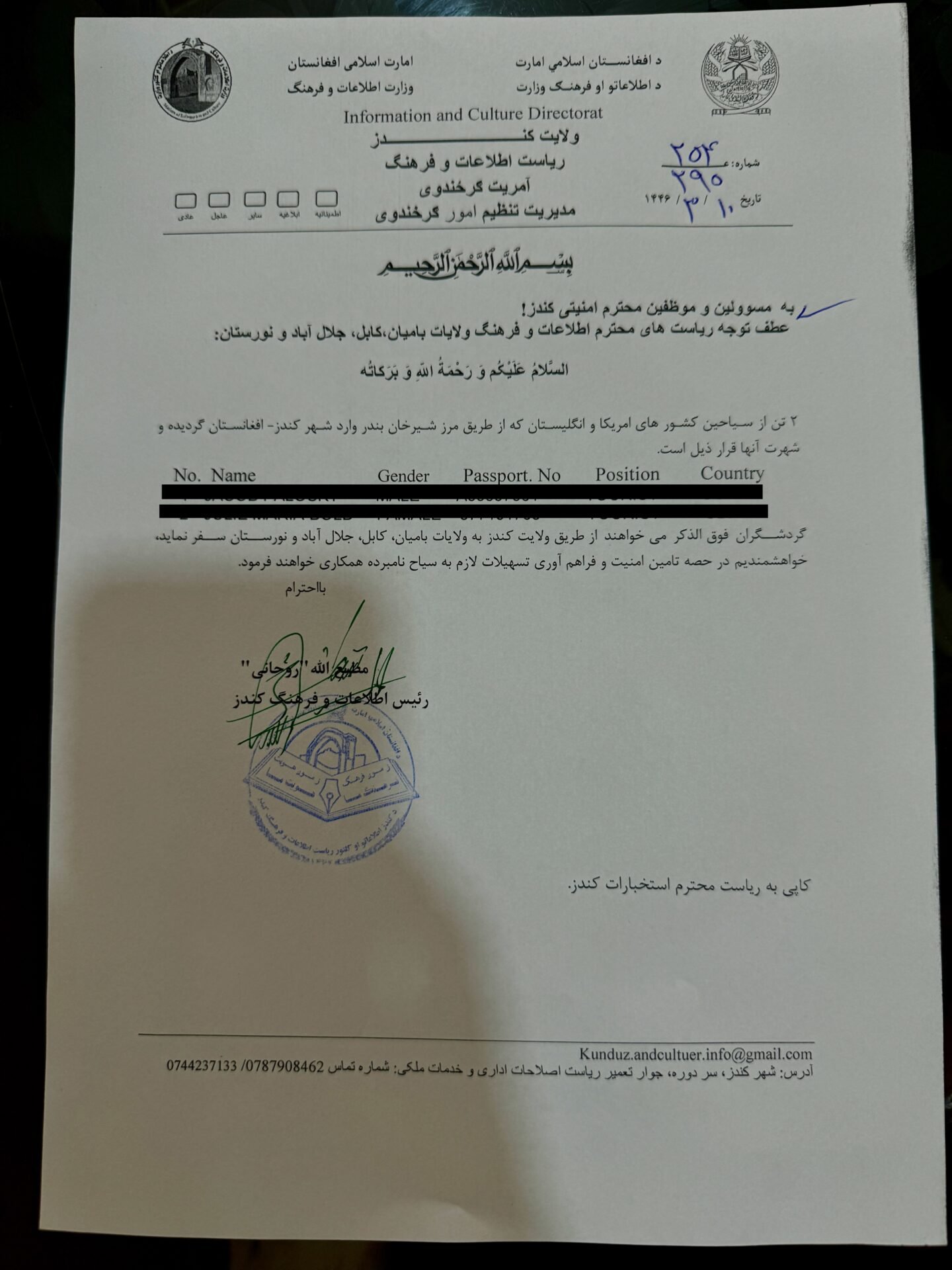
If you can’t get the travel permit the day you arrive, it’s okay; do it on the next possible working day.
One thing I want to make clear in this Afghanistan travel guide is that you don’t need to go to each office in every province, but can get them all at once (either in Kabul if you fly in, Kunduz if you enter via the Sher Khan Bandar border, or Herat if you enter from the Iran-Afghan land border).
If you arrive in Kabul, the permit office is here. Opening times: Saturday to Wednesday: 8 am to 4 pm, Thursday: 8 am to 1 pm, and Friday: closed.
If you arrive in Kunduz, the permit office is here.
If you arrive in Herat, the permit office is here.
Travel insurance for Afghanistan
Many insurers don’t cover travel to Afghanistan; I get it. I use Safety Wing all year round, and thankfully, they cover Afghanistan. Another option I found is Rocky Road Insurance.
That being said, before you enter Afghanistan, you’ve got to acknowledge that if you lose your passport or run into any trouble, it’s likely your country no longer has an embassy in Afghanistan. Therefore, it’s important to know how to contact your embassy in a neighbouring country. For most travellers, the embassy in Pakistan is probably the closest and most accessible option.
Travelling in Afghanistan as a woman
One of the main things I wanted to share in this Afghanistan travel guide is how I felt as a woman travelling in Afghanistan. There are two sets of rules for women in Afghanistan: one for foreign women and one for locals.
I’m sure if you’re reading this post, you’re aware of the situation for local women in Afghanistan. Under Taliban rule, they have been stripped of basic human rights. Afghanistan is one of the only countries in the world with a policy banning girls from going to school above the age of 13. Women are not allowed to work, except for a few sectors. Plus, women must be chaperoned by a male when travelling more than 78km from their house. They are also banned from exercising outside, joining gyms, or entering parks. This Amnesty International article articulates the situation far better than I can.
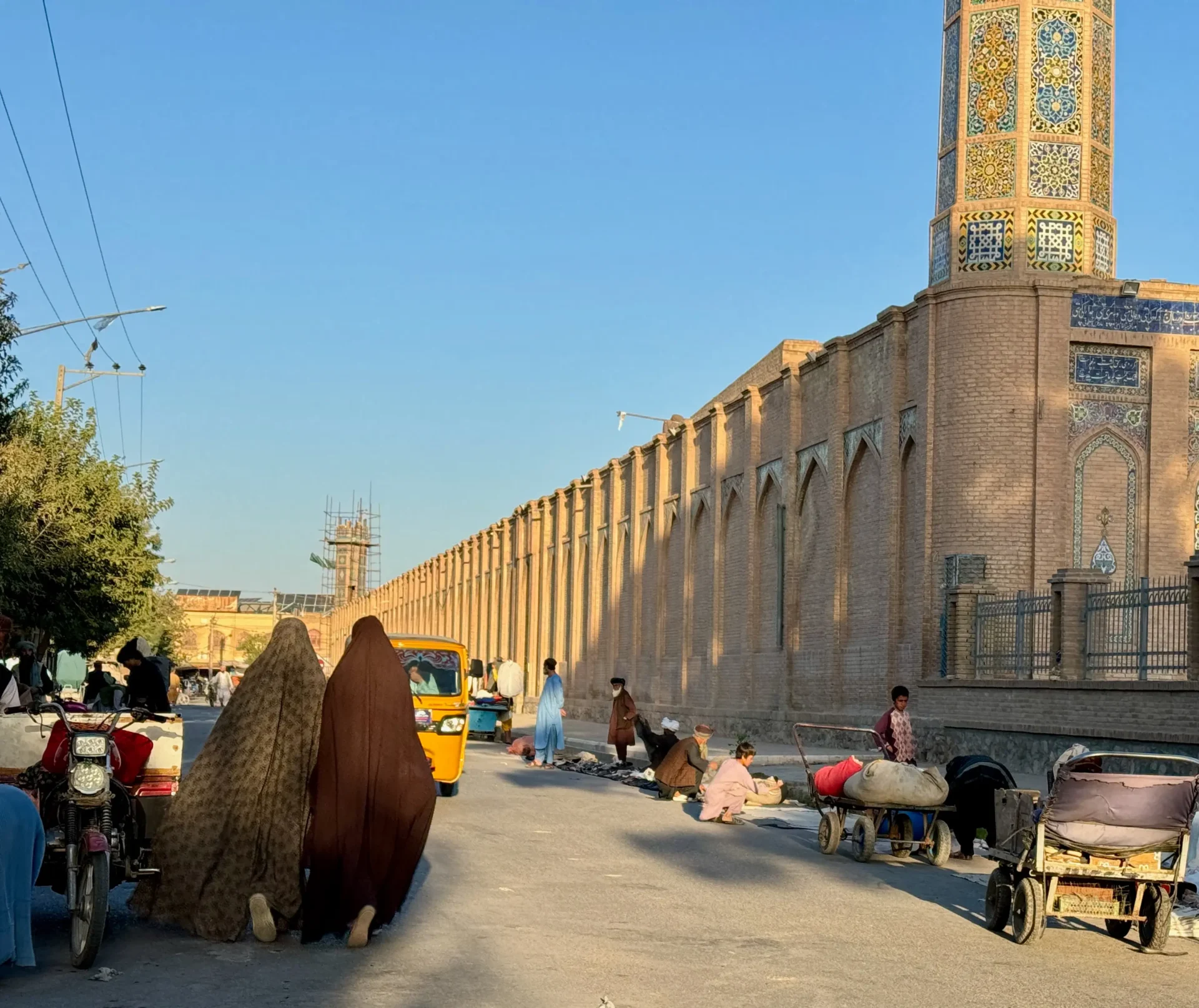
When I saw a rare occasion of a woman on the street, they typically wore a full burqa or hijab with a face mask to cover their nose and mouth. This is to avoid any hassle from Afghanistan’s so-called morality police. Read more about them here.
My experience with Afghanistan’s morality police
Twice at checkpoints, the morality police said something to our taxi driver about me not wearing a burqa. Once again, in the centre of Kabul, a group called me over to scold me for not covering my nose and mouth. Only when they realised I was a foreign tourist and could not respond to their aggressive questions in Pashto did they wave me on and apologise. As I walked away, they said, “Welcome to Afghanistan, sister.” I turned to my friend Jacob and said, “I dread how they would’ve treated me if I were a local woman.”
As a foreign woman, I experienced less hassle than local women, but I was still barred from entering spaces considered “male-only.” This included being escorted to the family section in restaurants, being restricted from areas like Band-e-Amir National Park, many mosques, and several other places. The situation of what foreign female tourists are “allowed” to do changes so often that it’s best to stay up to date on the Afghanistan travel WhatsApp group (message me on Instagram to receive the link).
Next up in this Afghanistan travel guide is accommodation.
Where to stay in Afghanistan as an independent traveller?
Afghanistan, you might have guessed correctly that there are no hostels. Aside from hotels, there is a budget option: chaikhanas.
Chaikhanas in Afghanistan
Chaikhanas are the cheapest places to stay as a traveller in Afghanistan. Most are local restaurants with basic rooms and a shared bathroom or sometimes just a toilet. Expect to pay between AFN 100 and 500 per room. In the room, you’ll find a carpet, a mattress, and a few pillows.
If you stay in a chaikhana, it’s likely the Taliban will come and check on you. We stayed in a chaikhana in Yakawlang; the Taliban came to check on us and proceeded to sleep next door. Remember, the app iOverlander is the best app for finding all the chaikhanas
Hotels in Afghanistan
First things first, unless you really want peace of mind, you don’t need to book anything in advance. Just show up.
Second, if you’re travelling with someone of the same sex and want to split the cost of a room, it’s no problem. But if you are two travellers of the opposite sex, you may just want to let the hotel owners assume you’re married. They won’t ask for evidence, but unfortunately, in Afghanistan, you have to be a married couple to share a room.
For a budget hotel in Afghanistan, expect to pay AFN 500-1000, depending on your negotiating power. The cheapest we paid was AFN 600 (in Kandahar) and the most expensive was AFN 2500 (in Herat).
How to travel around Afghanistan?
Afghanistan is just like every country; it has its own public transport, and it is widely used, just a little more informal, I guess. In Afghanistan, you can find shared taxis (most common), big buses and minibuses.
We took mostly shared taxis, which work on a simple rule: once the taxi is full, it leaves. It’s affordable and, honestly, one of the best ways to meet locals. On every shared taxi ride — from Sher Khan Bandar to Kunduz, from Kunduz to Kabul, and from Kabul to Jalalabad —we made friends, sharing meals together at service stops along the road.
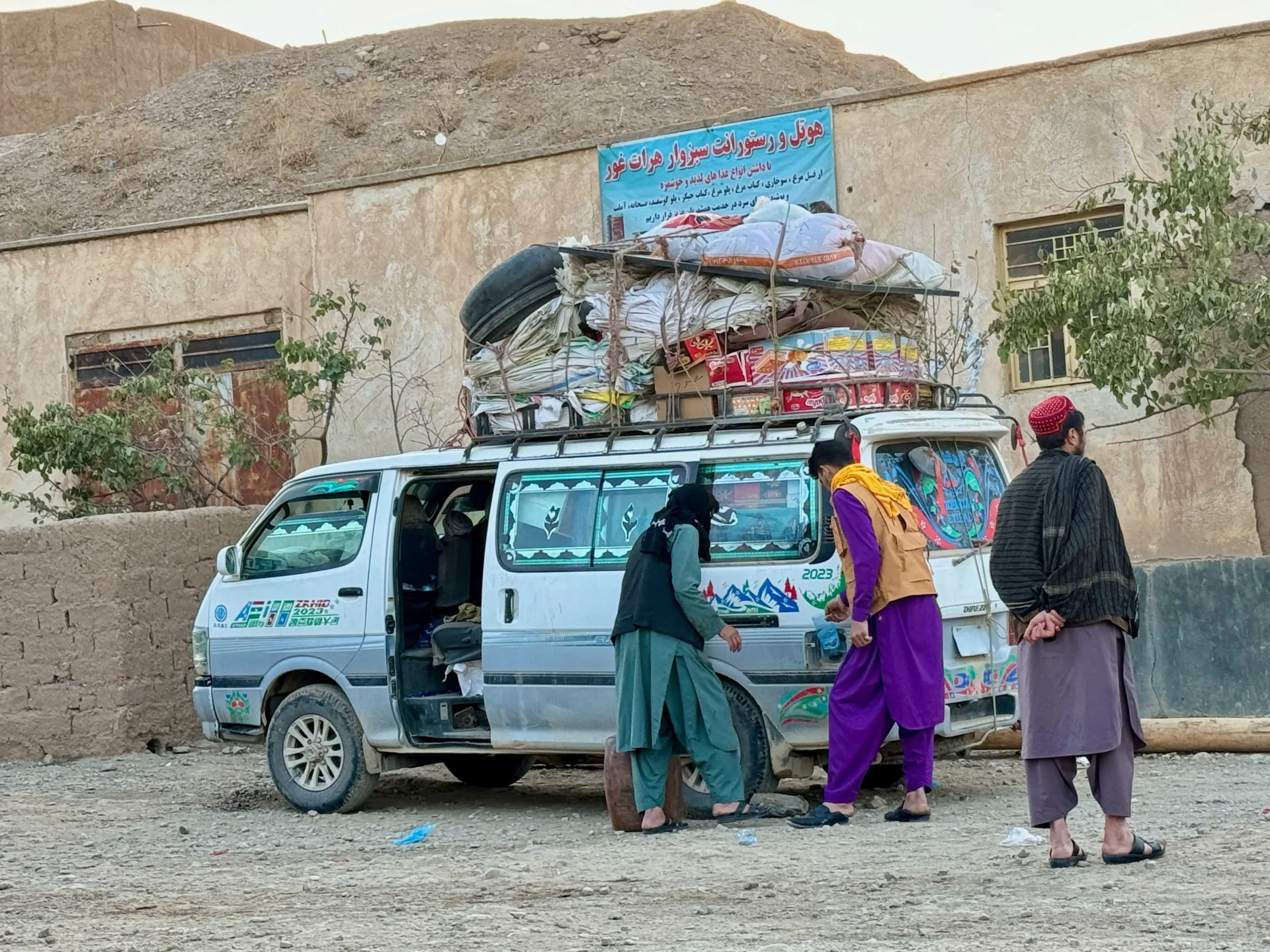
Between major cities, you can also catch “VIP” buses which have plug sockets and comfortable chairs, and while we didn’t try them ourselves, I’ve heard they’re a great option.
If you’ve got the budget, you can also hire a private taxi or driver for longer routes. We were lucky enough to meet Bart, a Belgian traveller who hired a private driver to visit the Minaret of Jam, and we were fortunate to tag along with him on that adventure.
In Kabul, we also took a few taxis. In Kunduz, tuk-tuks. In Kandahar, hitchhiked.
You get my point; there are plenty of ways to travel around Afghanistan, it’s just hard to find information online, so you’ll only really know once you get there. But I can assure you, most routes are set up, and it’s just about asking a local where to catch a particular bus or shared taxi from.
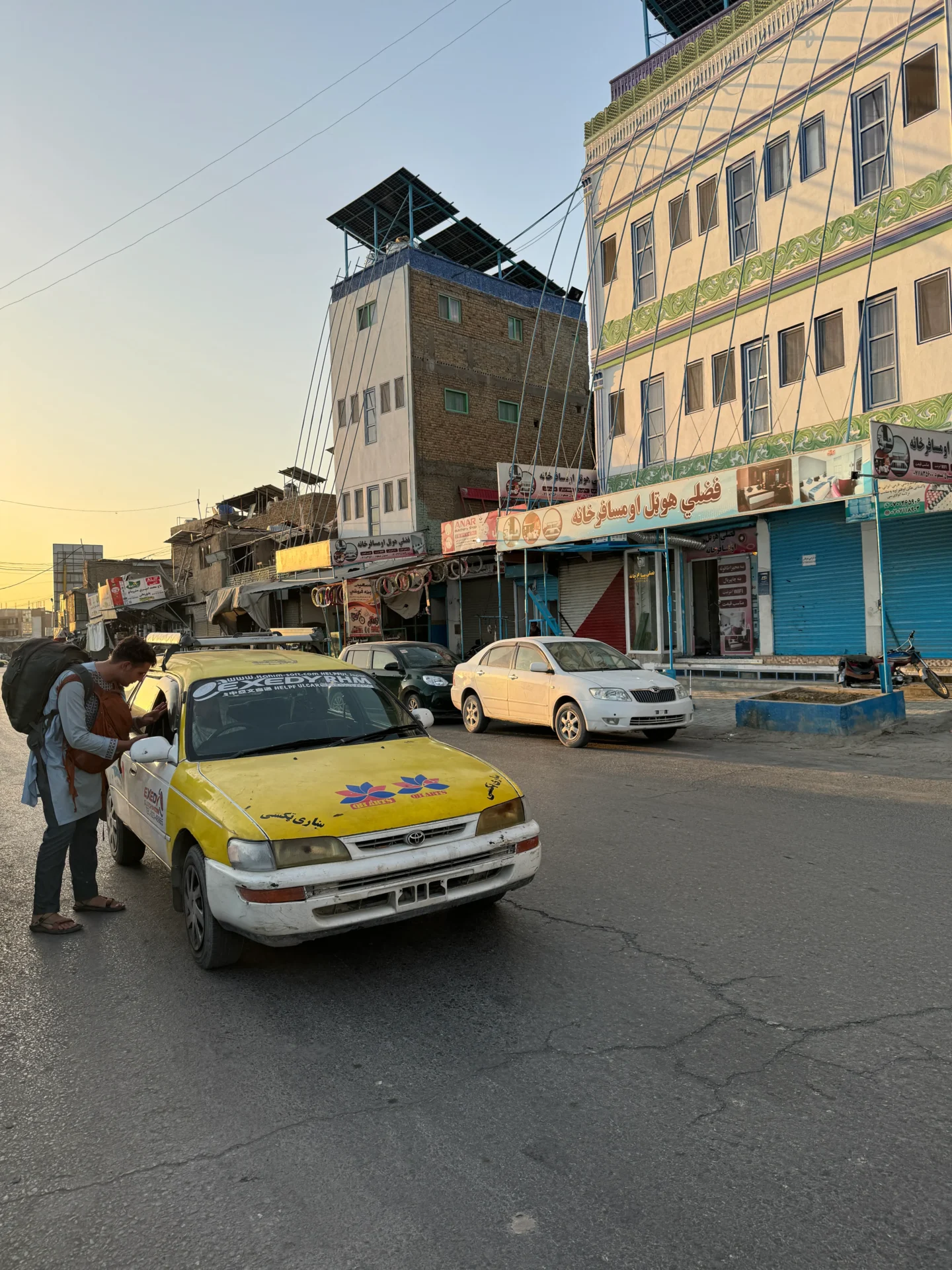
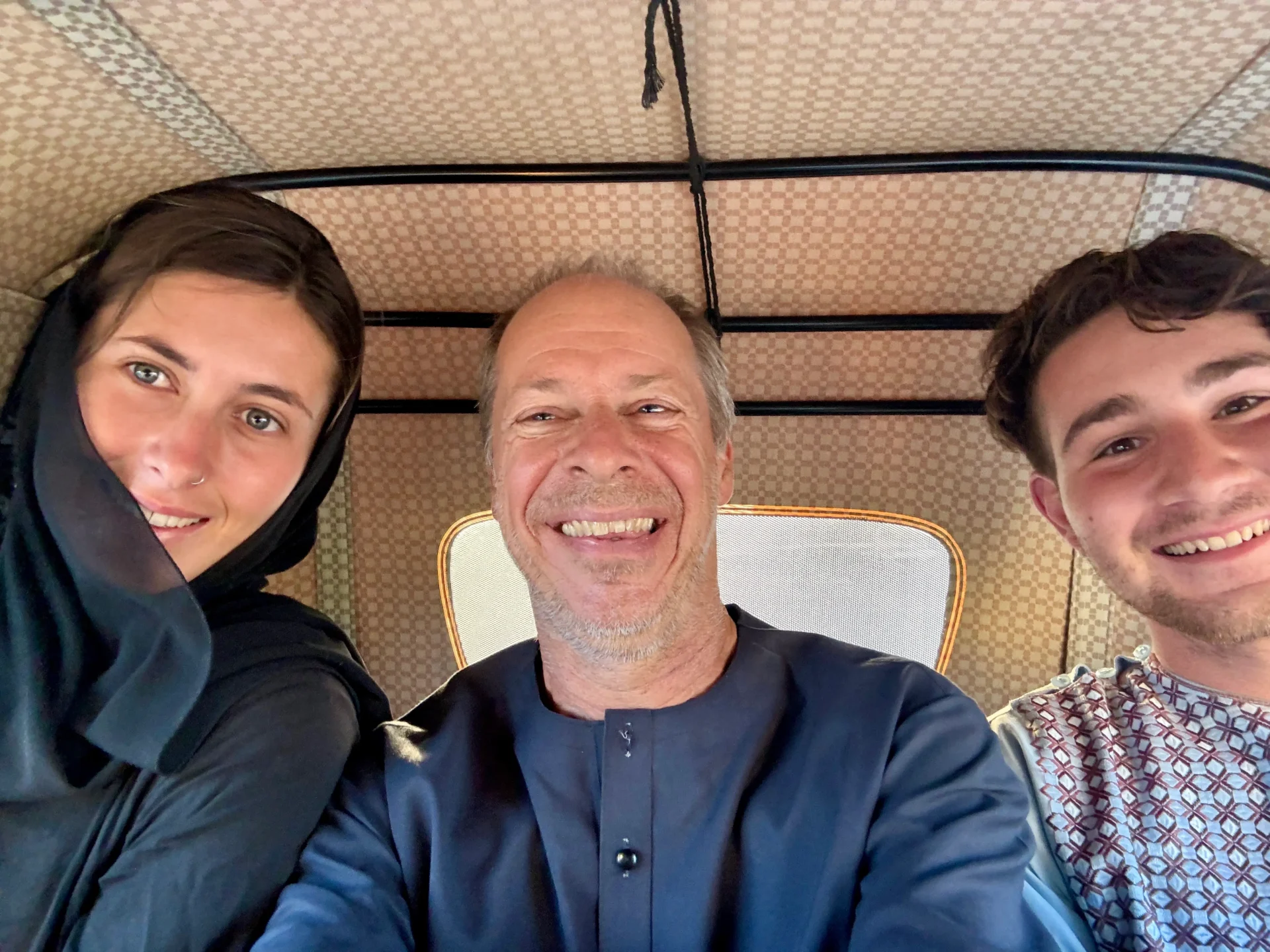
Where to visit in Afghanistan?
Ok, now the practicalities have been taken care of, let’s move on to where to visit as an independent traveller in Afghanistan. I go into much more detail about each destination in my full post: Where to Visit in Afghanistan? but here is a snapshot of key destinations.
KABUL
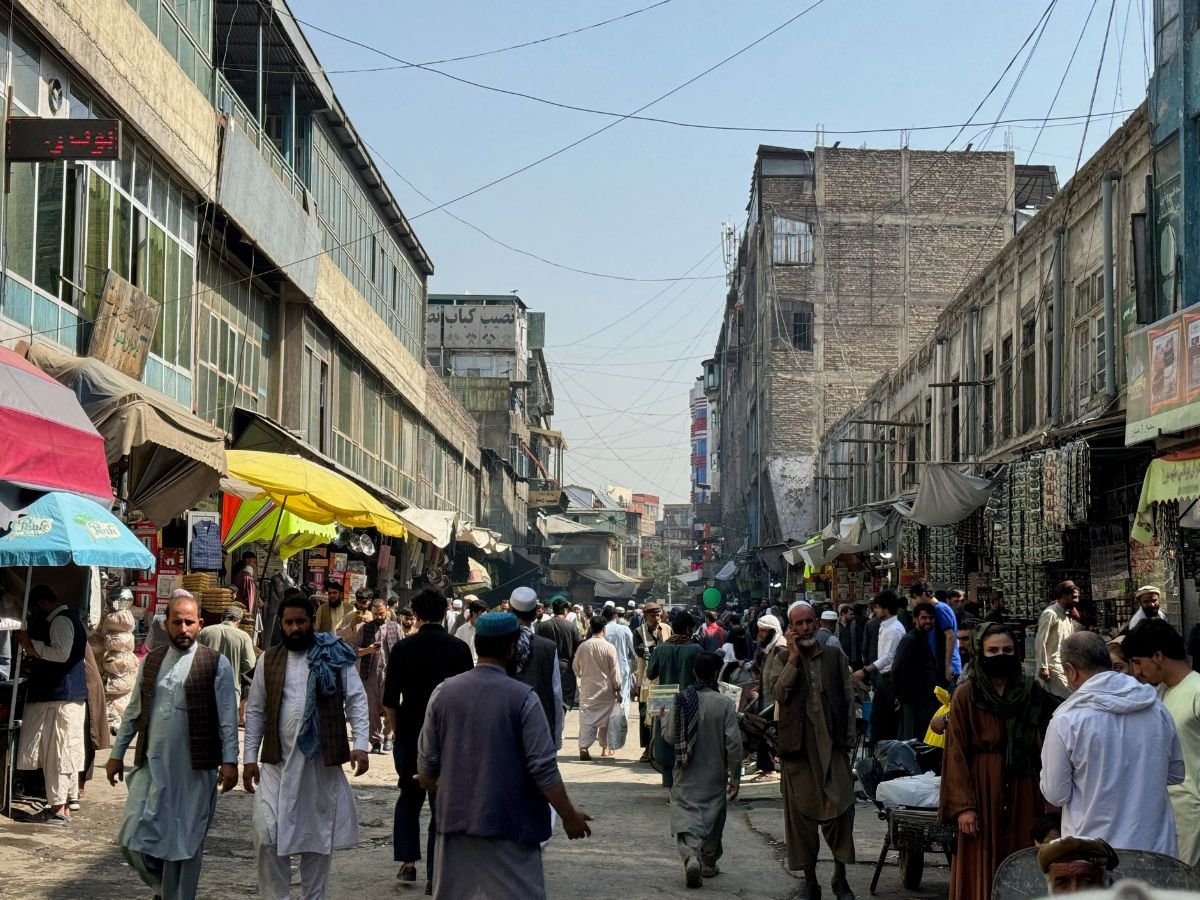
Kabul is the ideal location to establish your base and explore other areas. Spend a few days here to get a feel for the country. Shahr-e Naw is the best area to stay as a traveller. I’d recommend visiting Sakhi Shrine, Babur Garden, Ka Feroshi Bird Market, Sarai Shahzada Exchange Market, and Shahr-e-Naw Park.
Save for later: Guide to Kabul, Afghanistan
Bamyan
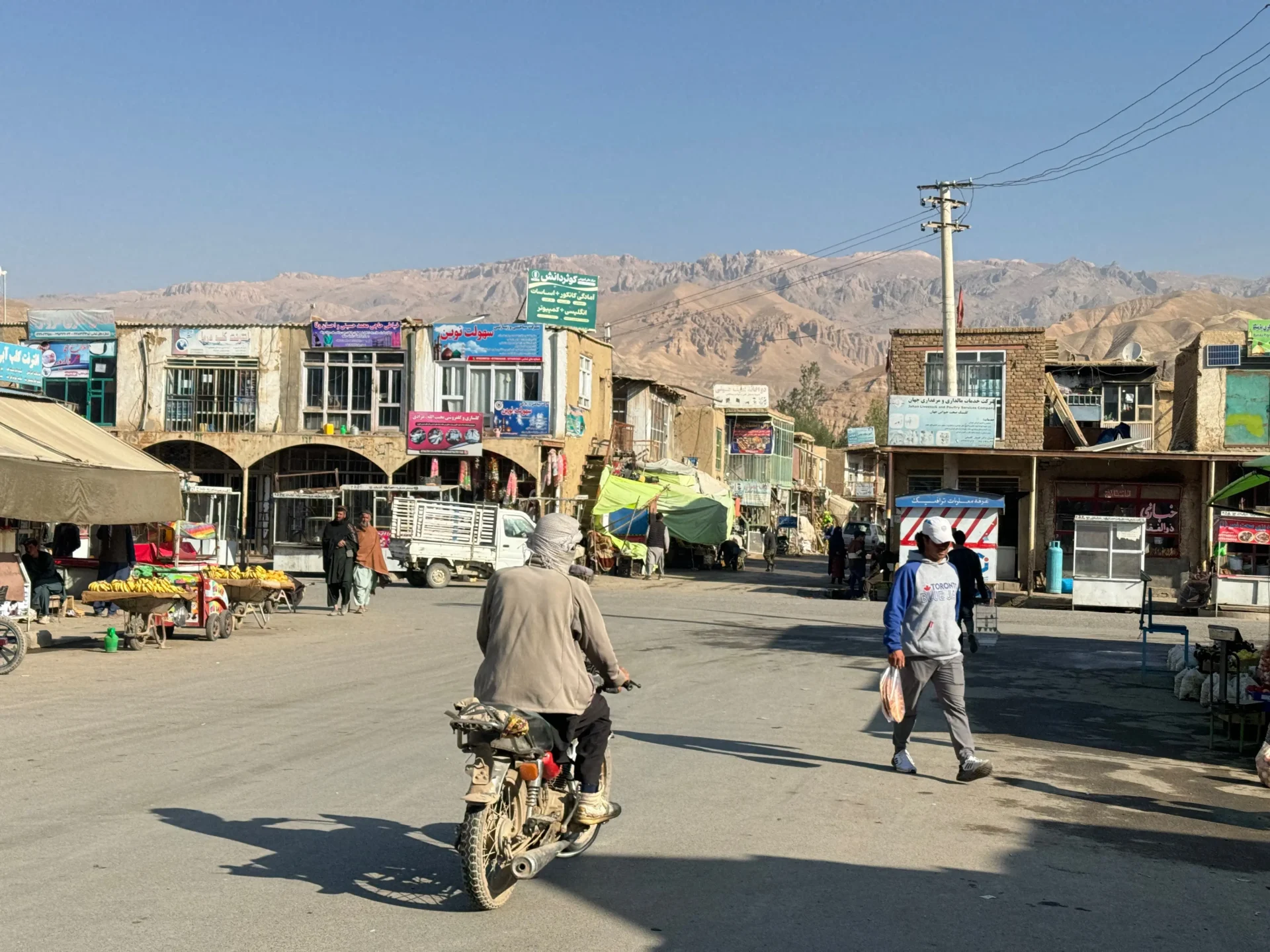
Spend at least a night in Bamyan, home to the Hazara’s rich culture and one of the country’s most historical landmarks, the remnants of the Bamyan Buddhas, which the Taliban blew up in 2001 following orders from Mullah Omar. Despite the physical loss of the Buddhas, it’s well worth visiting the site. Visit the Roof of the Bamyan hotel for stunning views, sip tea and take in the beautiful view of the UNESCO site from above.
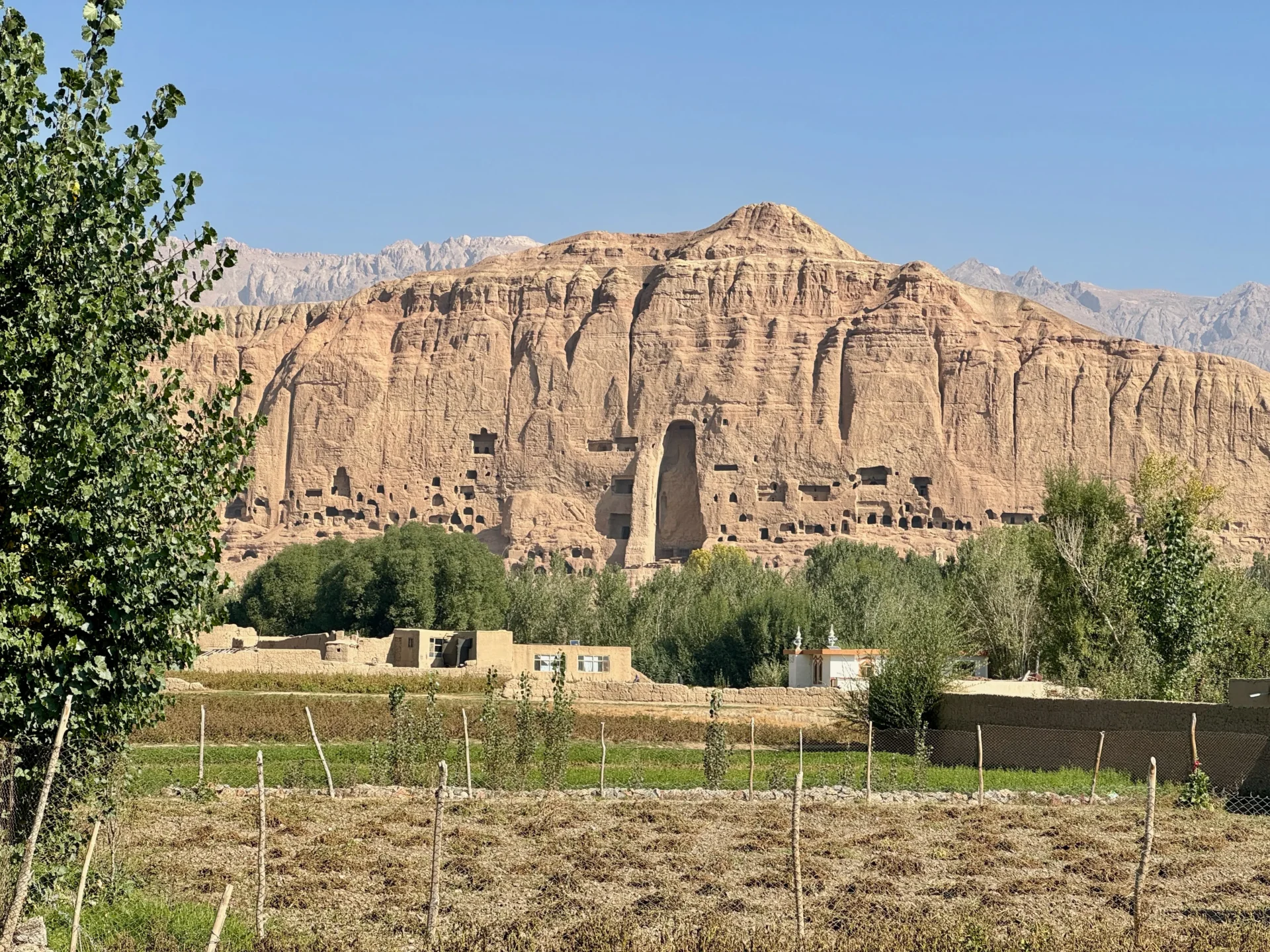
Band-e-Amir National Park
While you’re in Bamyan, it’s absolutely necessary to take a trip to Band-e-Amir National Park. Sadly, the Taliban have banned women from entering a section of the lake, citing that women were not adhering to the hijab rules. The rules are constantly changing, so you may be lucky! But anyhow, don’t worry, if you’re a female traveller, there’s a spot where you can see the lake from above here.
Herat
Sadly, we were only in Herat for one day and night. But it quickly became my favourite city in Afghanistan, and I wished we had more time there. Herat was a crucial stop on the Silk Road. It’s the second most populated city after Kabul, with a population of 4 million. Visiting the Central Blue Mosque is a must, as well as the main bazaar for traditional clothing!
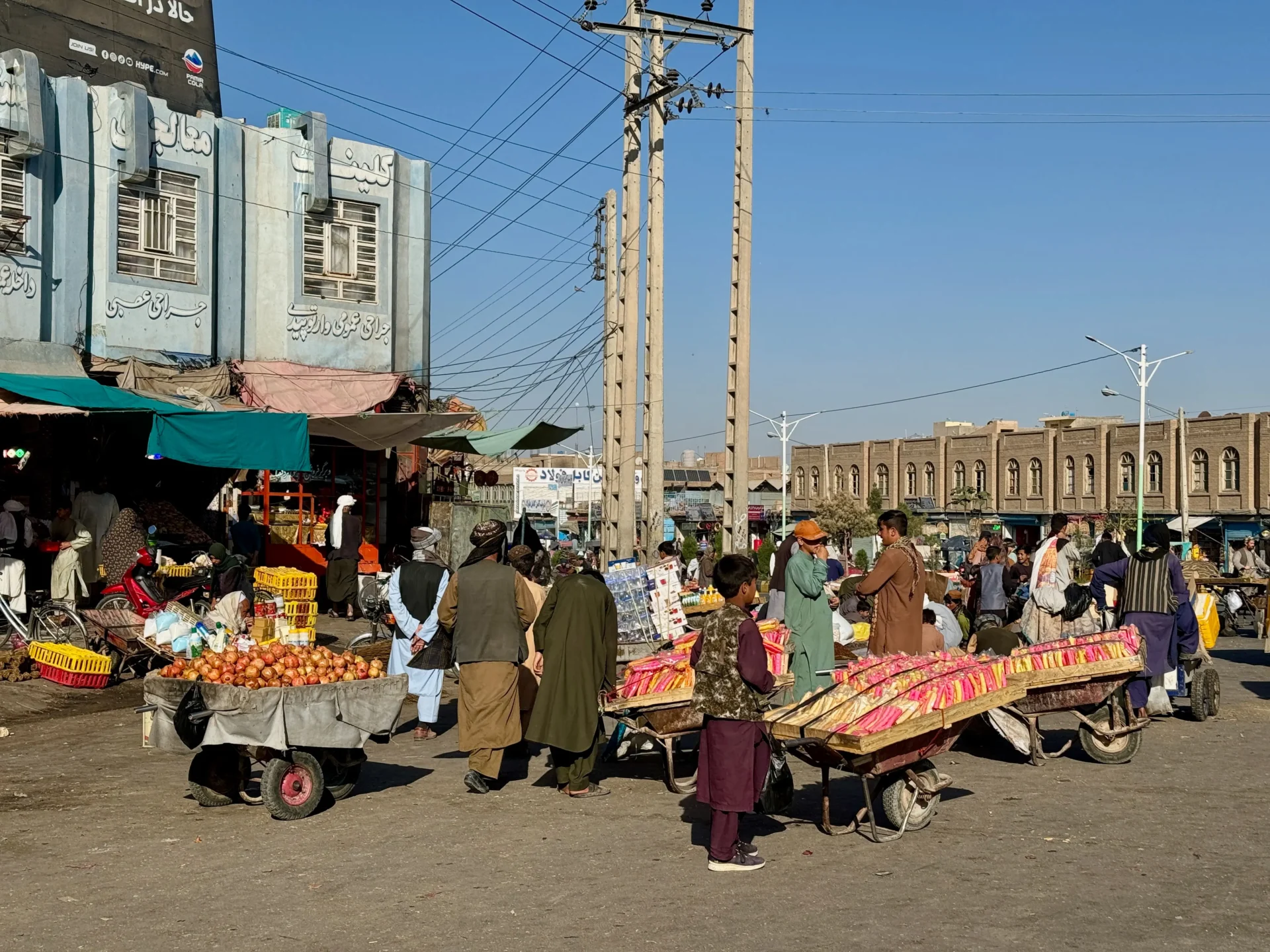
Kandahar
It’s likely you’ll know Kandahar because of its association with Mullah Omar and the formation of the Taliban. Sra Jama, or the Red Mosque, is the first place you should visit on your visit to the city. It is popularly known as Mullah Omar’s favourite mosque, and the place he used to invite “friends” like Osama Bin Laden to pray. You’ll find locals to be incredibly warm and hospitable in Kandahar.
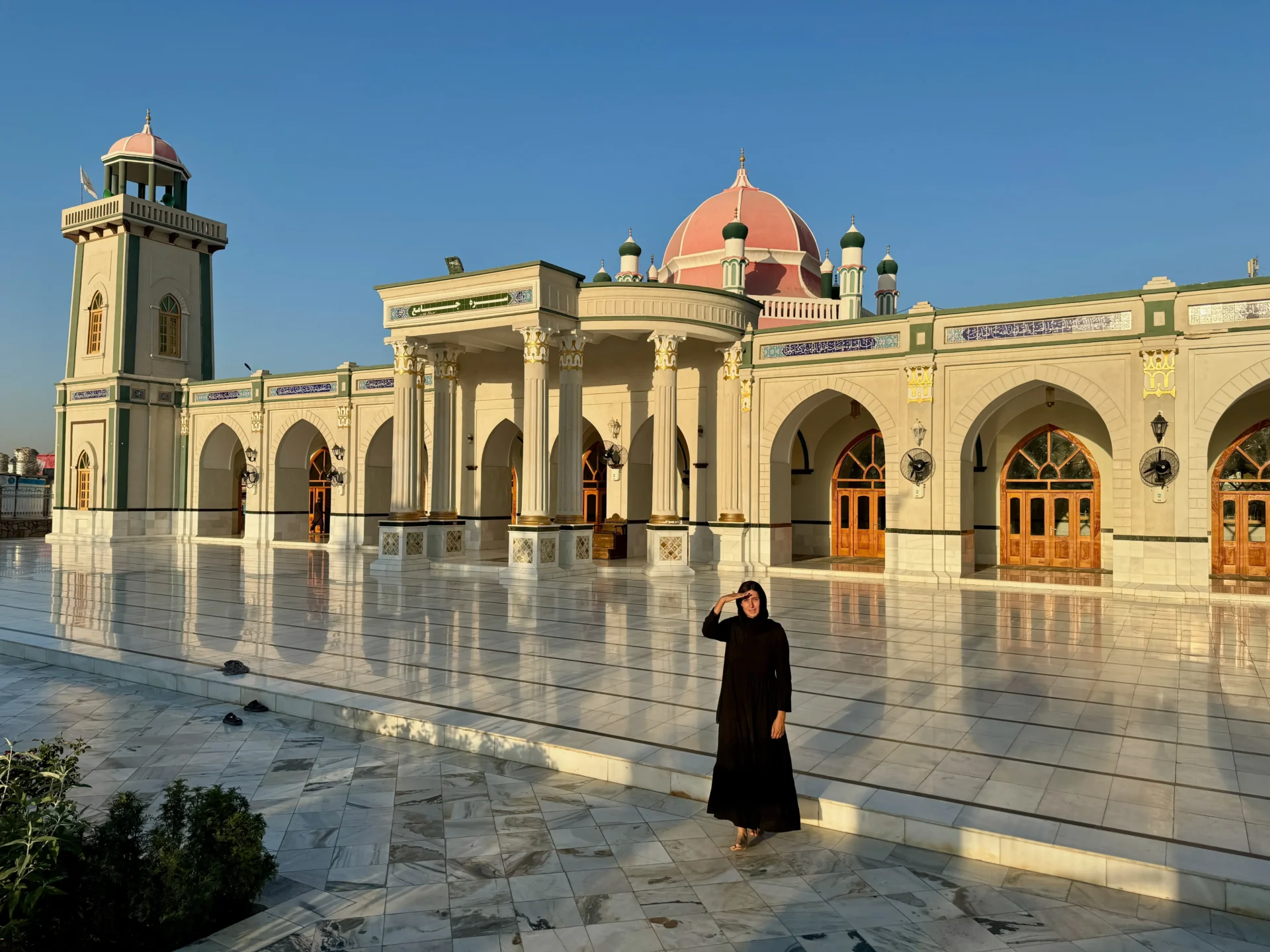
Kunduz
We were taken aback by Kunduz, expecting it just to be an overnight stop after the border on our way to Kabul. There’s not much sightseeing to do, but walking around is definitely entertaining enough!
Chagcharan and the Minaret of Jam
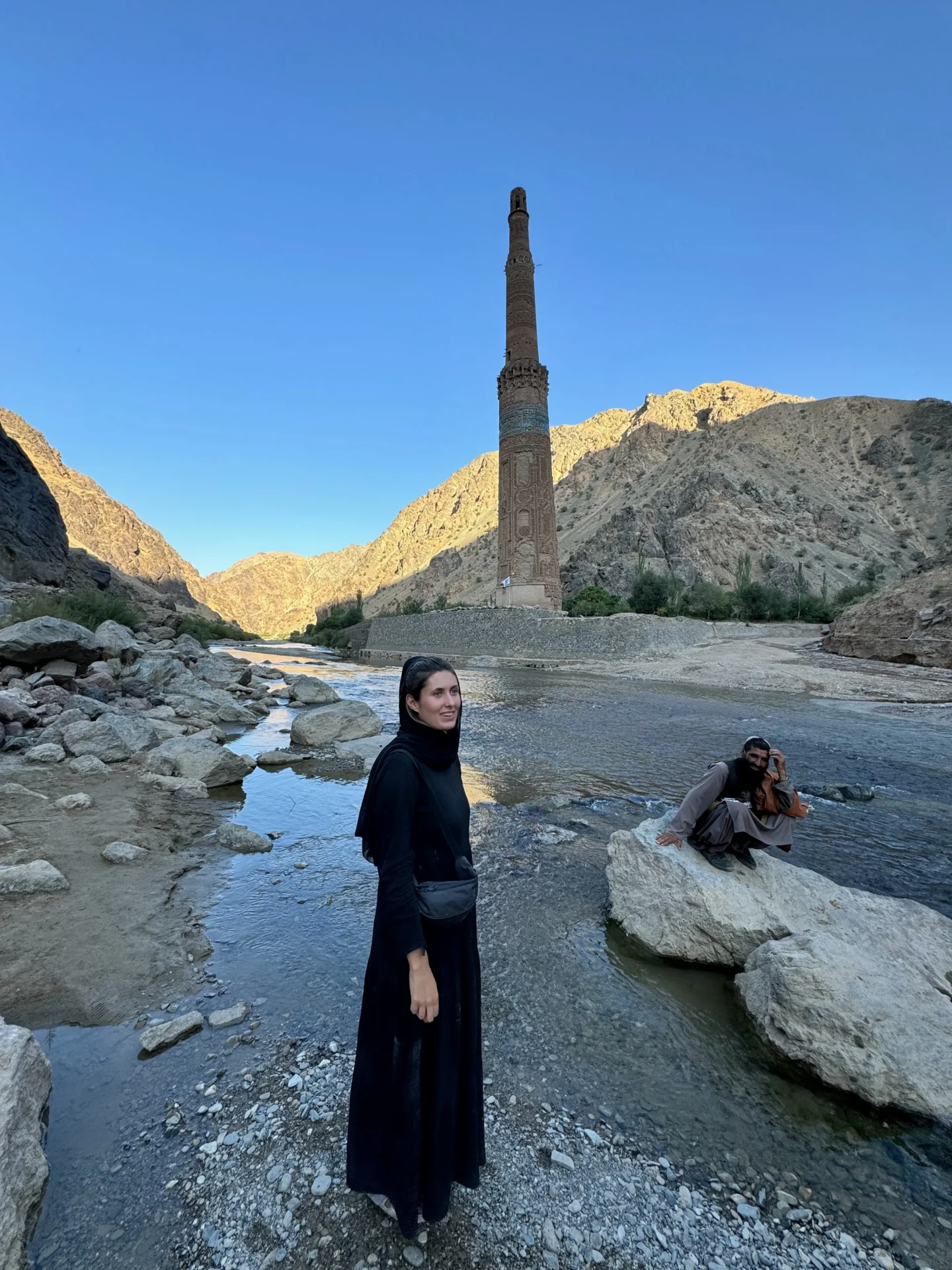
The road less travelled! The central road of Afghanistan is a tough one. Typically, travellers choose to reach Herat via the Kandahar road or by flying.
The 3-day drive from Kabul will take you through some of the most remote parts of Afghanistan—past nomads with tents and cattle, camels wandering along the dusty plains and mud-brick villages.
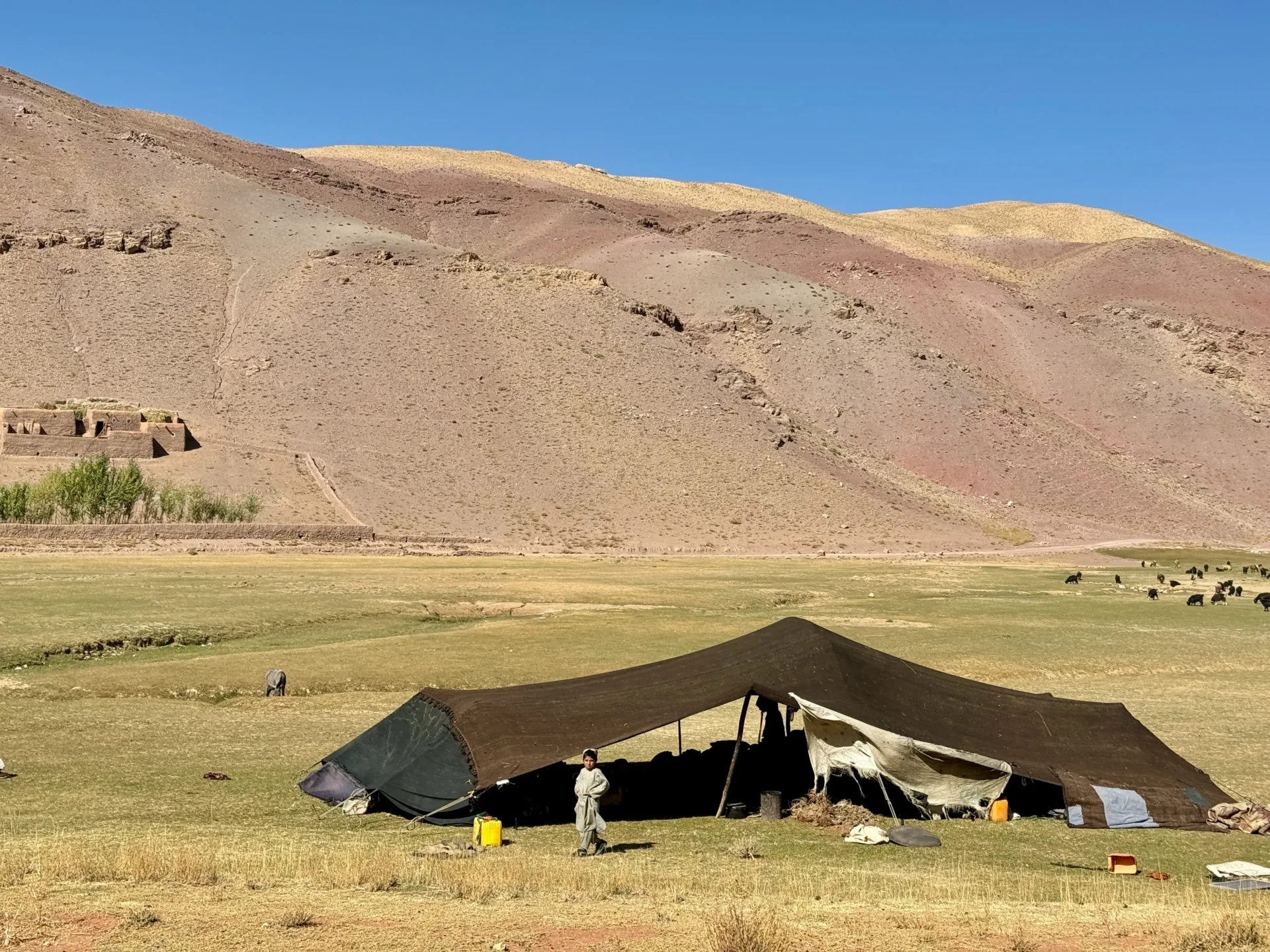
Nuristan
Nuristan is high on my Afghanistan bucket list, and while I didn’t make it there on my trip, I’ve heard so many amazing things, and I have big plans to go back to Afghanistan and visit this province.
The Wakhan Valley
As of April 2025, there have been reports that the Wakhan Corridor is open for tourists. The Wakhan Valley and its stunning mountains were one of the reasons why I was drawn to visit Afghanistan in the first place, but unfortunately, it was off limits to tourists in 2024.
I visited the lower part of the Wakhan Valley when I hitchhiked the Pamir Highway, and I can’t wait to visit the upper part when I visit Afghanistan next time.
If you want a more detailed itinerary including how to reach each place, check out: Where to Visit in Afghanistan: Itinerary and Transport Guide
“You’re going where?!”
Chances are, your friends and family think you’re out of your mind for planning a trip to Afghanistan—but now, after this Afghanistan travel guide, I hope you’re more equipped to answer their questions. I’m really happy you’re contemplating giving Afghanistan a chance.
If you want a further confidence boost or to put your mind at ease, I offer personalised travel consultations to help you plan your trip to Afghanistan. As a woman who has travelled there firsthand, I can share what it’s like, especially for female travellers. Whether it’s answering any concerns, planning your route, connecting you with locals, or preparing you for what to expect, I’m here to support you.
